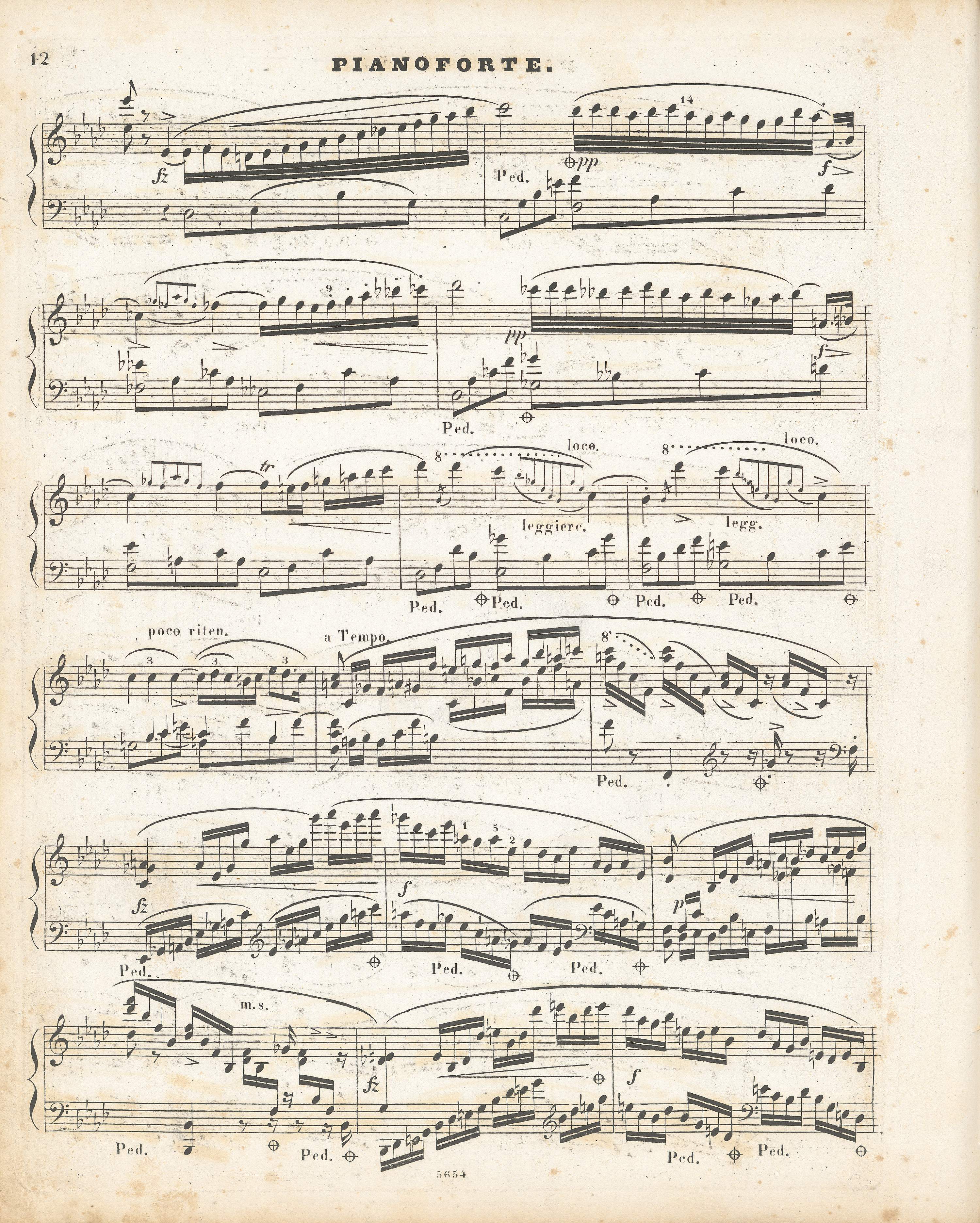



The place belongs to one of the vaguest in Chopin's entire output. The g -b
-b -c
-c 1-d1 sequence, written in A (→GE1→FE), being harmonically unclear and sonically awkward in this context, seems to contain a mistake; however, it is not easy to reproduce the version intended by Chopin. Two types of possible errors come to mind – omission of an accidental or placement of the sign in a wrong place – leading to three possible reconstructions of the composer's intention:
1-d1 sequence, written in A (→GE1→FE), being harmonically unclear and sonically awkward in this context, seems to contain a mistake; however, it is not easy to reproduce the version intended by Chopin. Two types of possible errors come to mind – omission of an accidental or placement of the sign in a wrong place – leading to three possible reconstructions of the composer's intention:
-
The sequence in the L.H. was to be closely analogous with bar 218 and Chopin forgot to put a
 before the penultimate quaver. The version was introduced in EE and GE2 has an equally sounding version with d
before the penultimate quaver. The version was introduced in EE and GE2 has an equally sounding version with d 1. However, according to us, an oversight of a
1. However, according to us, an oversight of a  before c
before c 1 in a flat key is highly unlikely, since it is difficult to indicate a psychological mechanism explaining a possible oversight of the sign (an erroneously written c
1 in a flat key is highly unlikely, since it is difficult to indicate a psychological mechanism explaining a possible oversight of the sign (an erroneously written c 1 instead of d
1 instead of d 1 seems to be already slightly more likely). In addition, the absence of the strict analogy in the R.H. – one note less in the group of demisemiquavers and b
1 seems to be already slightly more likely). In addition, the absence of the strict analogy in the R.H. – one note less in the group of demisemiquavers and b 1 and not b1 at the end of the bar – suggests that it could have also been in the L.H. that such an analogy did not have to be the goal of the composer.
1 and not b1 at the end of the bar – suggests that it could have also been in the L.H. that such an analogy did not have to be the goal of the composer. -
Chopin put a
 before an inaccurate note. It leads to the version written then in FED. This kind of mistakes are very rare, yet it is worth noting that the
before an inaccurate note. It leads to the version written then in FED. This kind of mistakes are very rare, yet it is worth noting that the  before the last quaver is put exactly at the pitch of c1. We give this version, performed during lessons with Chopin and hence the only one whose authenticity is really confirmed, in the main text.
before the last quaver is put exactly at the pitch of c1. We give this version, performed during lessons with Chopin and hence the only one whose authenticity is really confirmed, in the main text. - Chopin committed the most frequent of his mistakes – he wrote a note without checking whether an accidental written earlier in the bar would change its sound. It leads to the last of the given versions, with c1-d1. According to us, it is absolutely the most likely reconstruction of the text of A as such, without including the version of analogous bar 218 or the entry in FED.
Compare the passage in the sources »
category imprint: Interpretations within context; Differences between sources
issues: Annotations in teaching copies, EE revisions, Annotations in FED, Omissions to cancel alteration, GE revisions, Errors of A, Accidental below/above the note
notation: Pitch






